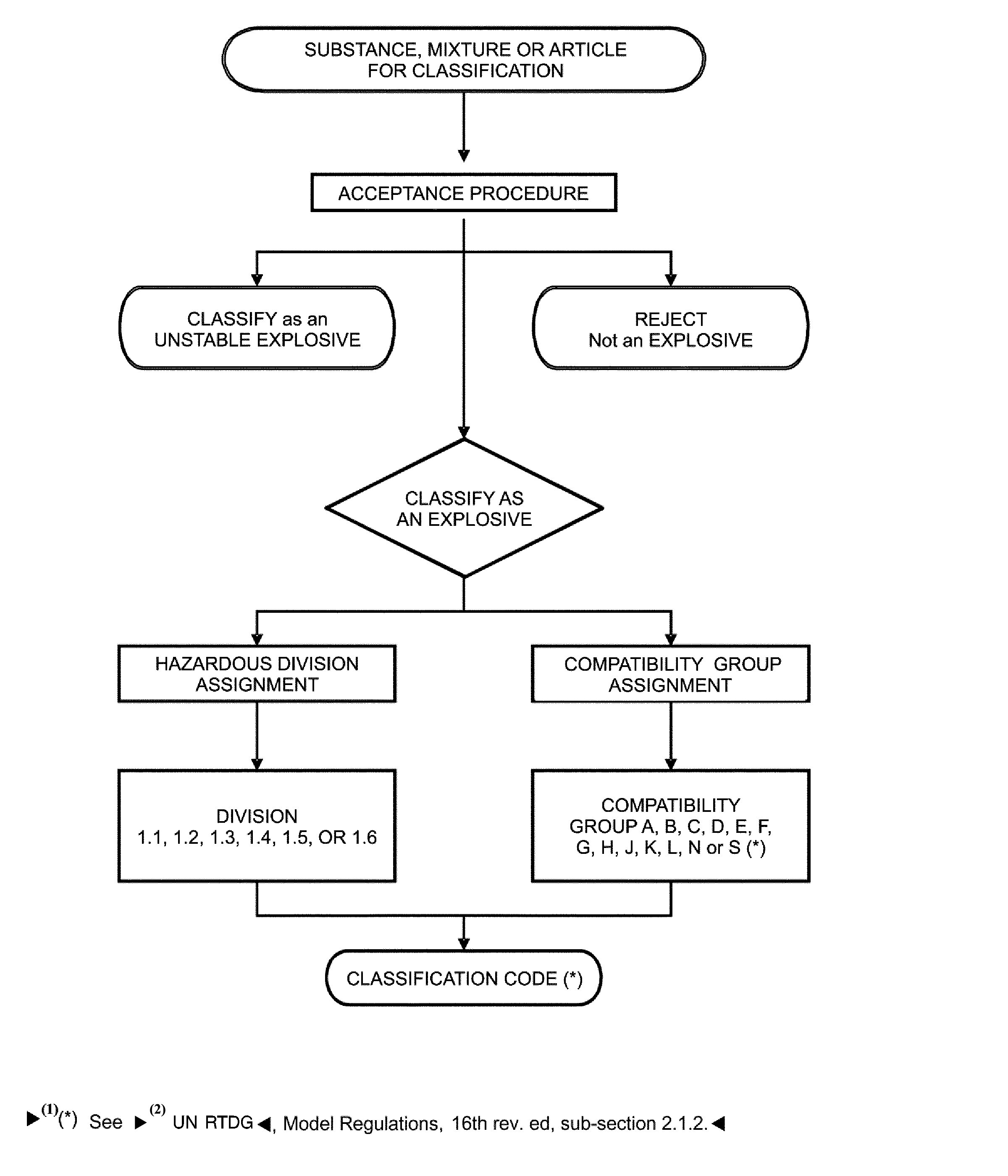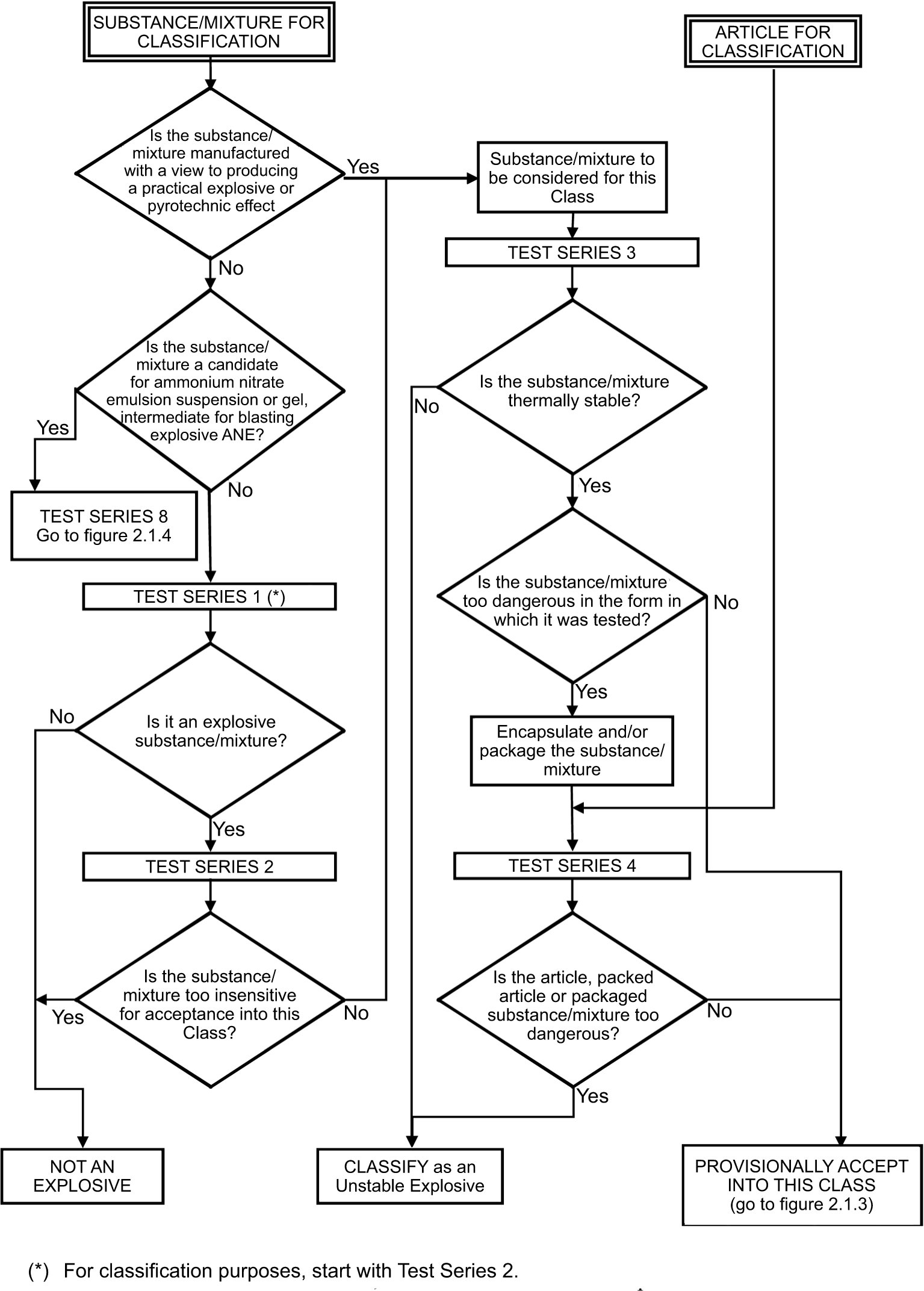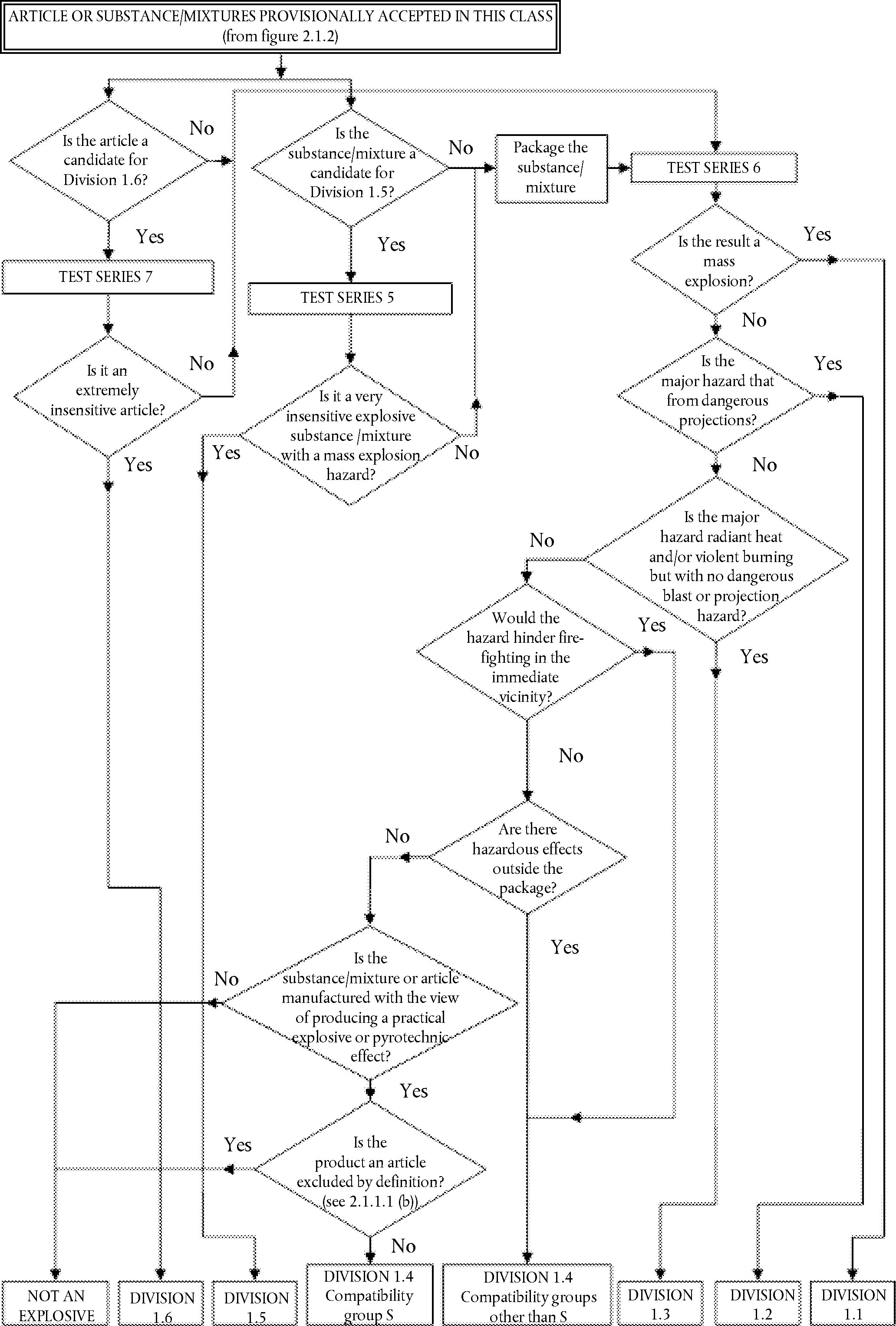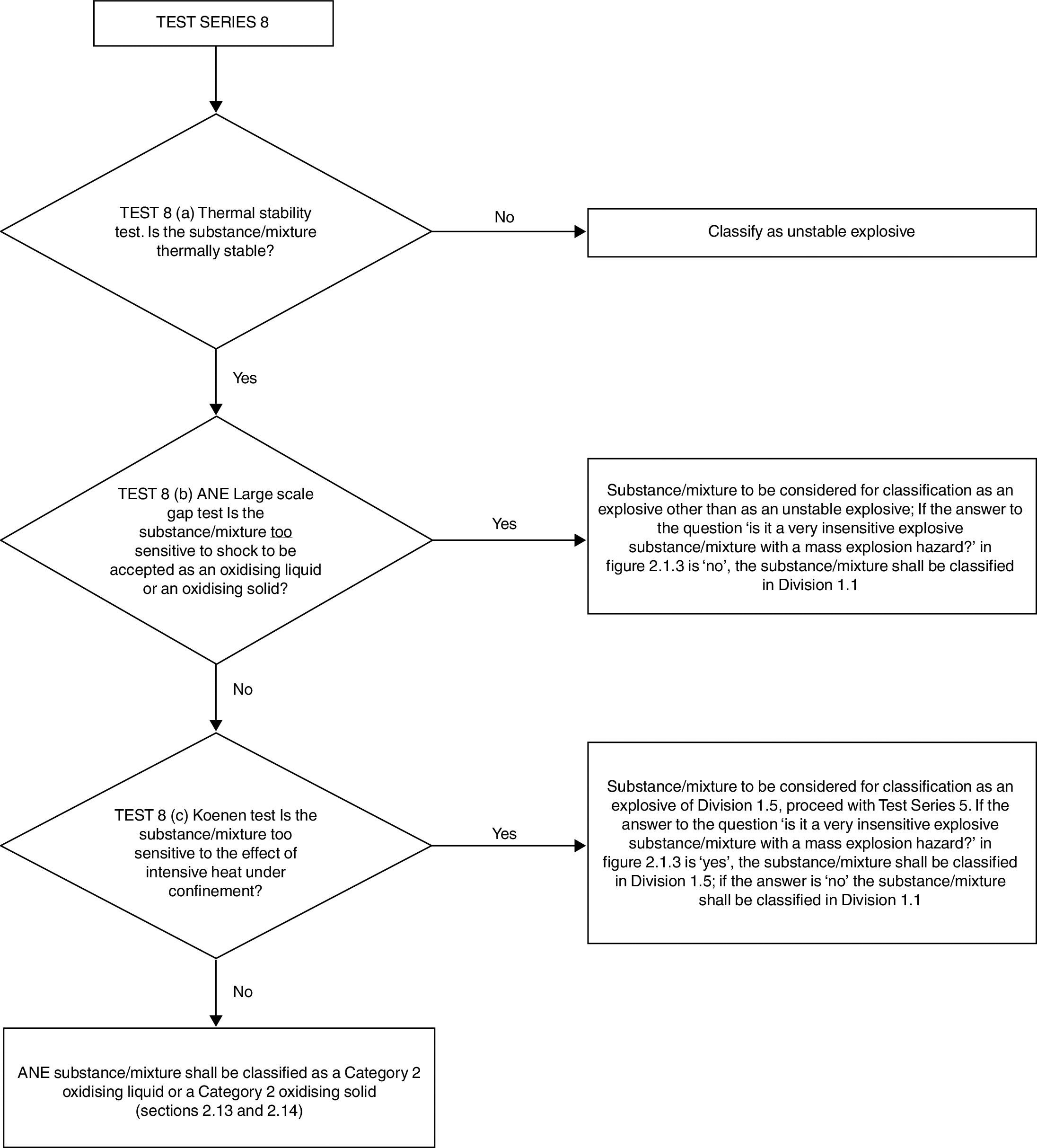Call us: +44 870 8 200 310
Or write: experts@regartis.com
2.1.4.: Additional Classification Considerations
The first step is to ascertain whether the substance or mixture has explosive effects (Test Series 1). The second step is the acceptance procedure (Test Series 2 to 4) and the third step is the assignment to a hazard division (Test Series 5 to 7). The assessment whether a candidate for ‘ammonium nitrate emulsion or suspension or gel, intermediate for blasting explosives (ANE)’ is insensitive enough for inclusion as an oxidising liquid (section 2.13) or an oxidising solid (section 2.14) is answered by Test Series 8 tests.
Explosive substances and mixtures wetted with water or alcohols, or diluted with other substances to suppress their explosive properties, may be treated differently in terms of classification and other hazard classes may apply, according to their physical properties (see also Annex II section 1.1.).
Certain physical hazards (due to explosive properties) are altered by dilution, as is the case for desensitised explosives, by inclusion in a mixture or article, packaging or other factors.
The classification procedure is set out in the following decision logic (see Figures 2.1.1 to 2.1.4).
Figure 2.1.1
Overall scheme of the procedure for classifying a substance, mixture or article in the class of explosives (Class 1 for transport) 
►(2) M2
►(2) M4
Figure 2.1.2
Procedure for provisional acceptance of a substance, mixture or article in the class of explosives (Class 1 for transport) 
Figure 2.1.3
Procedure for assignment to a division in the class of explosives (Class 1 for transport)

Figure 2.1.4
Procedure for the classification of ammonium nitrate emulsion, suspension or gel (ANE)

Explosive properties are associated with the presence of certain chemical groups in a molecule which can react to produce very rapid increases in temperature or pressure. The screening procedure is aimed at identifying the presence of such reactive groups and the potential for rapid energy release. If the screening procedure identifies the substance or mixture to be a potential explosive, the acceptance procedure (see section 10.3 of the ►M4 UN RTDG ◄ , Manual of Tests and Criteria) has to be performed.
Note:
The oxygen balance is calculated for the chemical reaction:
CxHyOz+ [x+ (y/4)-(z/2)] O2 → x CO2 + (y/2) H2O
Using the formula:
Oxygen balance = -1 600 [2x + (y/2)-z]/molecular weight;

